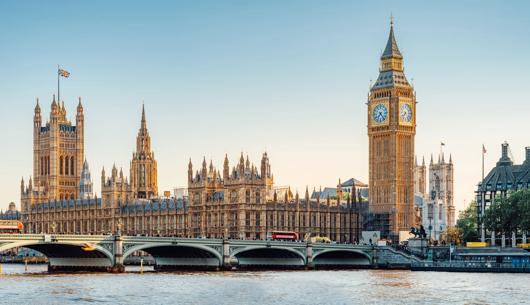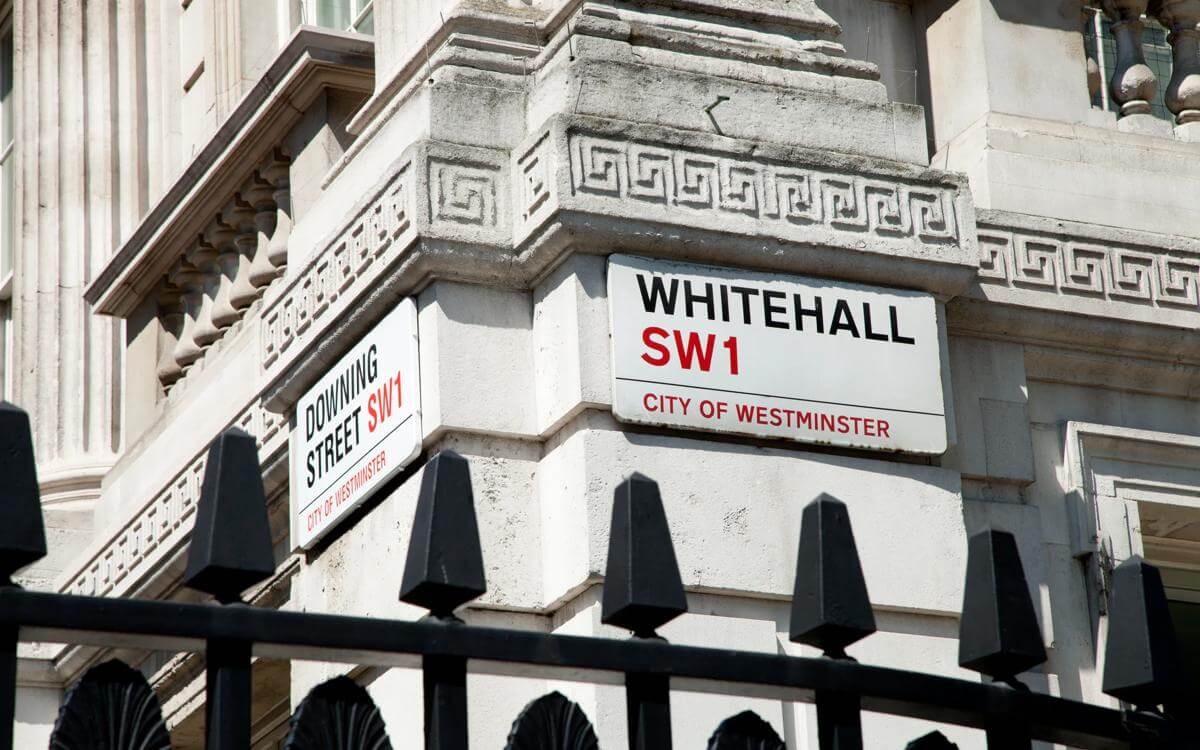New Year, New Subsidy Control Regime Part 1: The principles, restrictions and exemptions under the Subsidy Control Bill
The repeal of the State aid rules and their replacement by the regime stemming from the UK-EU Trade and Co-operation Agreement (TCA) in 2021 meant that practitioners and public bodies had to acclimatise to a new, more flexible but less certain approach.
It has been a turbulent couple of years for those involved in subsidy control. The repeal of the State aid rules and their replacement by the regime stemming from the UK-EU Trade and Co-operation Agreement (TCA) in 2021 meant that practitioners and public bodies had to acclimatise to a new, more flexible but less certain approach. The current year has the potential to be equally challenging. The Subsidy Control Bill (the Bill) was first published in June 2021 and is due to take effect in 2022. It will form the backbone of the UK’s new subsidy control regime, intended by Boris Johnson’s Government to replace the “burdensome” EU State aid rules. Its aims are to:
- empower local authorities, public bodies and central and devolved governments to design subsidies that deliver strong benefits for the UK taxpayer;
- enable authorities to deliver subsidies that are tailored and bespoke to local needs in order to support the UK’s economic recovery and deliver UK Government priorities such as levelling up, achieving net zero and increasing UK R&D investment;
- provide certainty and confidence to businesses investing in the UK by protecting against subsidies that risk causing distortive or harmful economic impacts, including to the UK domestic market; and
- contribute towards meeting the UK’s international commitments on subsidy control, including its international commitments under the World Trade Organisation Agreements, Free Trade Agreements and the Northern Ireland Protocol.
The foundation of the new domestic subsidy control regime was stated to be “a clear, proportionate and transparent set of principles, underpinned by guidance, that will ensure public authorities fully understand their legal obligations and embed strong value for money and competition principles”.
These are high aims and require the new regime to manage a difficult balancing act between a number of competing interests: allowing the swift and effective delivery of targeted subsidies to innovative new companies; enabling the creation of jobs; and addressing social and economic difficulties, all whilst ensuring that public money is not wasted and that the public and other stakeholders can have confidence in the regime.
Many commentators have raised questions over the transparency and efficacy of the new regime. It appears to offer the scope for significant new flexibilities in the way in which subsidies are granted. Early drafts of illustrative guidance, illustrative regulations, policy statements and illustrative examples have just been published by the Government to illustrate how three key areas of the new subsidy control regime will operate:
- Subsidies or schemes of interest/particular interest;
- The Subsidy Control Principles; and
- Streamlined routes.
In Part 1 of this article, we explore the subsidy control principles, prohibited subsidies, restrictions and exemptions laid down in the Bill. In Part 2, we will consider streamlined subsidy schemes, transparency, the role of the Competition and Markets Authority (CMA) and the enforcement provisions. Throughout the article, we will address the implications of the Bill for those giving and receiving subsidies in the UK. We will also consider the recently published illustrative documents. At the time of writing, the Bill is at Committee stage in the House of Lords so is potentially subject to further amendments – in which case we will publish an updated version of this article.
Subsidy Control Principles
The structure of the Bill will be fairly familiar to those who have been used to applying the Trade and Cooperation Agreement (TCA) regime. Chapter 1 of the Bill provides that a ‘public authority’ (defined as a person exercising functions of a public nature, but not including either house of Parliament, the Scottish Parliament, the Senedd Cymru or the Northern Ireland Assembly) must consider the subsidy control principles (the Principles) before giving a subsidy or making a subsidy scheme. It must not give a subsidy or make a subsidy scheme unless it is of the view that the subsidy is consistent with those Principles (Section 12). The Principles (set out in Schedule 1) are broadly the same as the six principles under the TCA regime, but with some textual differences and the addition of a seventh principle – that subsidies should be designed to achieve their specific policy objective while minimising any negative effects on competition or investment within the United Kingdom. Where a subsidy is to be given in relation to energy or the environment, there are additional principles to consider, set out in Schedule 2.
The Principles are broadly drafted, and our experience with the TCA regime has been that they can be difficult to interpret and apply, particularly at a sub-central level where the granting authority may not have sufficient oversight to determine what (for example) in reality the impact upon trade or investment between the UK and the EU might be, and what standard of evidence is required in order to demonstrate the subsidy’s compliance with the Principles. Very clear guidance which directs a granting authority as to the evidence that needs to be put in place to demonstrate compliance with the Principles, would be a significant benefit here. The evidential requirements must also factor in the resources available to smaller authorities who may (for example) struggle to undertake economic appraisals to the same degree as larger authorities or government departments – assuming they even have access to the relevant information. There is a danger that smaller authorities will be left unable to implement their own subsidies or schemes and are simply left to rely on streamlined subsidies. Depending on the breadth and depth of streamlined subsidy schemes available, this may leave smaller authorities with fewer options than were available under the prior State aid regime. The intended greater flexibility becomes hollow if sub-central authorities do not have the information, expertise or resources required to exercise that flexibility.
The Illustrative Guidance (Guidance) published by the Government is intended to give a sense of what the final guidance on the practical application of the Principles will be like, and it should be noted that it is subject to change.
The Guidance sets out a four-part framework for public authorities to use to ensure that a subsidy is consistent with the Principles. The steps are:
- Identifying the policy objective, ensuring it addresses a market failure or equity concern, and determining whether a subsidy is the right tool to use;
- Ensuring that the subsidy is designed to create the right incentives for the beneficiary and bring about a change;
- Considering the distortive impacts that the subsidy may have and keeping them as low as possible; and
- Carrying out a final assessment against the Principles and making any changes necessary to achieve compliance with these.
This is essentially a grouping of the Principles and doesn’t appear to add anything new to what granting bodies are doing in practice under the TCA regime. It is helpful to confirm that this is the correct approach though.
The Guidance goes on to say that the depth of analysis needs to be proportionate to the size and potential distortive impact of the subsidy or scheme in question. Where the subsidy is relatively lower in value or has very few potentially distortive features, it will require a less detailed analysis, whereas more extensive analysis will be required for novel and contentious subsidies, and those with more distortive design features. This will be the case for Subsidies/Schemes of Interest or Subsidies/Schemes of Particular Interest for which there will be a separate Annex to the Guidance for granting authorities to consider -although this is not yet available. This approach is as anticipated, but the Guidance appears to require a detailed analysis even in the case of low value subsidies. It may be that this process is ‘short circuited’ for low value/less distortive subsidies by the establishment of streamlined subsidy schemes (for further on this see Part 2 of this article).
The draft Guidance is currently incomplete – and presumably published at this stage to support the passage of the Bill through Parliament. However, it is clear that the Guidance requires a significant effort from public authorities applying the Principles. Much of this should be done as part of the granting authority’s business case in respect of a particular action in any event. However, the Guidance appears to require significant analysis of (for example) the geographical distribution of economic actors in a particular sector within the UK, which is unlikely to be within easy reach of many sub-central authorities without seeking external support.
This is certainly a move away from the State aid approach, where the block exemptions were designed to weed out subsidies which might have negative effects on competition and require them to be considered by the European Commission prior to granting. This process meant that a view could be taken of the EU-wide impact of a subsidy before a decision was taken to grant it. There appears to be a risk that under the new UK regime, subsidies can be granted by authorities with imperfect information which may have distortive effects which were not anticipated, or which were disregarded in the pursuance of a particular objective.
The addition of a further Principle, that subsidies should be designed to achieve their specific policy objective while minimising any negative effects for competition or investment within the UK, is something not considered within the State aid regime; nor is it an obvious factor when decisions are made in relation to the compliance of a subsidy with the TCA regime, although the reference to ‘any negative effects’ in the sixth TCA principle arguably captured this. This is clearly an indicator that the regime is intended to provide a level playing field as regards subsidies within the four nations of the UK, but one which has the potential to cause some interesting effects. Many of the subsidies which are granted by UK public bodies are aimed at job creation – and therefore, as a matter of course have the potential to have an impact on competition between different regions. Unlike the State aid regime, which used block exemptions and the regional aid map to direct subsidies towards areas of particular need, the subsidy control regime does not appear to differentiate between richer and less well-off areas of the country. It is open to a granting authority to grant a subsidy directed towards regional development in a well-off area, provided that it complies with the Principles. It may be that the provisions in relation to subsidies of interest/particular interest will require the CMA to review larger subsidies, but otherwise, the new regime does not appear to focus subsidies towards areas where regional development aid might be particularly required – it is therefore hard to see how the Bill will support the ‘levelling up’ agenda in this respect.
The granting of subsidies which specifically require a beneficiary to relocate its operations from one part of the UK to another are prohibited, but what about subsidies which have this, or a similar effect indirectly? These are not prohibited – the Guidance specifically provides that “Subsidies which are liable to incentivise the recipient to relocate existing activities or divert the originally planned location of new investment (without requirement or conditionality) are not prohibited”, but these effects may in some circumstances run counter to the Government’s intention to level the playing field.
How rigorously will the Principles actually be applied?
Public authorities have, of course, been used to applying the State aid rules, which give a fairly prescriptive route to determining whether a State aid exists and whether it can be granted lawfully or not. This was often a question for lawyers. However, as well as ensuring compliance with the legal process, public authorities now need to undertake a level of economic, policy and commercial analysis which was not previously required. While clearly some level of analysis in these areas will always have been required for robust decision making by public bodies, the Guidance issued so far appears to require a far higher standard of assessment. While these are not questions of law, and so the burden of decision making has shifted away from the lawyers, authorities are finding that involving their legal teams in the assessment provides for a more robust and consistent approach. There are several reasons for this:
- legal teams are accustomed to ensuring that public authority decisions are made correctly and in accordance with statutory and governance requirements. A decision as to whether the Principles are satisfied must still meet the same standards as any decision of a public body as well as complying with the subsidy control legislation;
- they will have a broad experience of the approaches taken elsewhere within an authority and possibly across several authorities – giving a sense of context and perspective to the level of analysis required;
- as new guidance and the decisions of the Competition Appeal Tribunal (CAT) evolve, elements of the previous State aid regime will remain helpful – if not binding - when applying the Principles. After all, the European Commission has been considering broadly the same factors for many years on projects which are likely to be of a similar nature. The relevance of the prior regime will diminish over time as the CAT starts to develop its own body of judgements but will certainly be useful in the short term; and
- finally, the decision as to whether a subsidy complies with the Principles forms part of a wider legal framework which must also be complied with.
If decisions on compliance with the Principles are taken without legal support there is a danger that wider issues (for example, relating to prohibited subsidies) and/or the Principles will be misinterpreted or not properly applied, and in these circumstances an authority may grant a subsidy unknowingly. This was common under the State aid regime when some authorities took the key components of ‘aid’ at face value without knowing exactly what was meant by an ‘undertaking’ or how sensitive the test was for impacting trade between Member States.
A less than rigorous approach can soon become institutionalised, and because the CMA does not currently appear to be able to instigate an investigation into a subsidy on its own initiative, there is a risk that this type of issue is not discovered. This is compounded by the fact that subsidies which are given ‘unknowingly’ will not find their way onto the transparency database, and therefore, cannot be subject to scrutiny in that manner either.
Although significant discretion is afforded to granting authorities, the decision-making process must not become a ‘tick box exercise’. This would undermine the effectiveness and reliability of the new regime. It is essential for all stakeholders to have trust in the system for it to work effectively. Without a genuine belief that decisions to grant a subsidy have been made on a proper basis, and that they can be challenged if not, trust in the new regime will suffer.
Exemptions
Part 3 of the Bill sets out exemptions, including the exemption for ‘small amounts of financial assistance’ not exceeding £315,000. Such subsidies are subject to procedural requirements similar to those for grants of de-minimis State aid (see s. 37 of the Bill) but they are not subject to the full scope of the subsidy control regime – for example, they are not required to comply with the Principles.
Exemptions are also made for subsidies given to compensate for the damage caused by natural disasters and other exceptional circumstances whose effects are not purely economic. These provisions may enable aid to be granted swiftly and with certainty in circumstances similar to (for example) the coronavirus pandemic. Other exemptions are provided in relation to a range of circumstances which are likely to be relevant at central government level only. Subsidies given to respond to national or global economic emergencies are also exempted -though a notice must be given by the Secretary of State to confirm that the exemption applies in respect of the particular emergency.
Prohibitions and restrictions
Chapter 2 of the Bill sets out various prohibitions and restrictions in relation to the granting of a subsidy. As with previous regimes, unlimited guarantees and subsidies which are dependent on export performance or the use of domestic over imported goods are prohibited. A new restriction is imposed, which has not been seen before in previous regimes: a subsidy will be prohibited if it is given on condition that the beneficiary relocates all or part of its existing economic activities (including where the relocation of the activities is within the UK). This is clearly part of the Bill which seeks to provide for a level playing field within the UK, as discussed above.
Interestingly, the provisions in relation to subsidies provided to entities in financial difficulties appear to row back somewhat on the more relaxed approach taken in the TCA (which prohibited subsidies to ‘ailing or insolvent’ businesses except where the support would contribute to the public interest – for example, by avoiding job losses or disrupting an important service). The regime in the Bill (sections 19 to 24 in particular) adds a significant amount of regulation around this, including a definition of ‘ailing or insolvent’, which could capture many start-up businesses. This is a move back to a more prescriptive approach akin to the ‘undertakings in difficulty’ provisions of the EU State aid regime.
Contact

Alex Kynoch
Partner
alex.kynoch@brownejacobson.com
+44 (0)115 976 6511








































